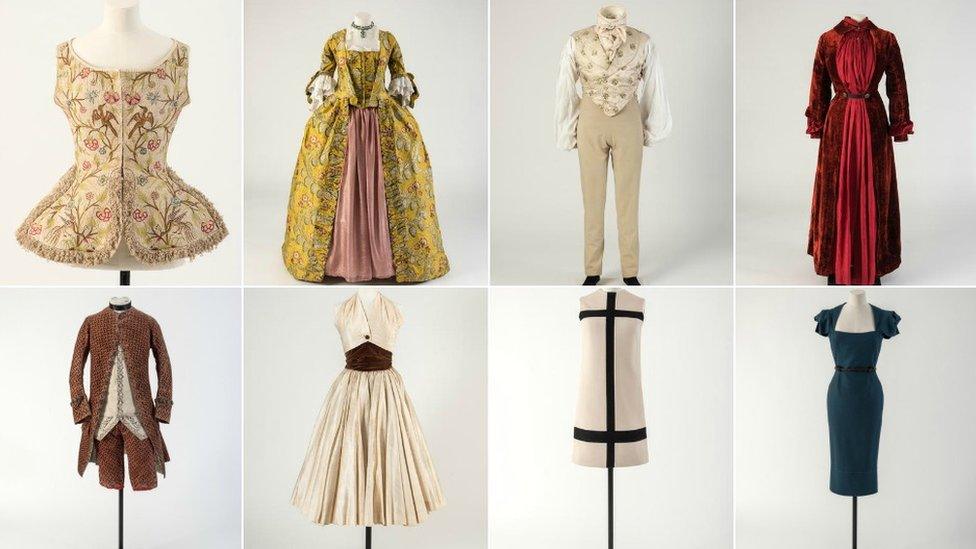Leeds's passion for fashion explored in new exhibition
- Published
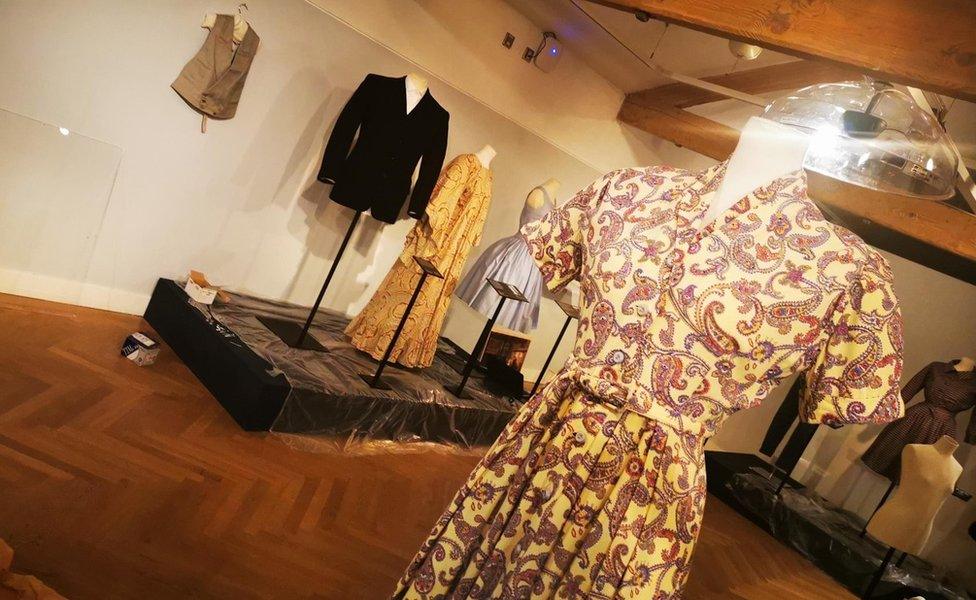
This dress was bought by Mary Preston in 1953 and worn by her granddaughter years later as an alternative to the fashion dominant at the time
The changing fashions of people through the centuries are on display at a new exhibition in Leeds.
Featured garments include a made-to-measure corset popular in the Victorian era to a red suit from one of the city's "most elite" department stores.
Outfits worn by local people are also displayed along with stories about why they were so special.
It hopes to illustrate how lessons can be learned from the traditional make-do-and-mend approach to clothes.
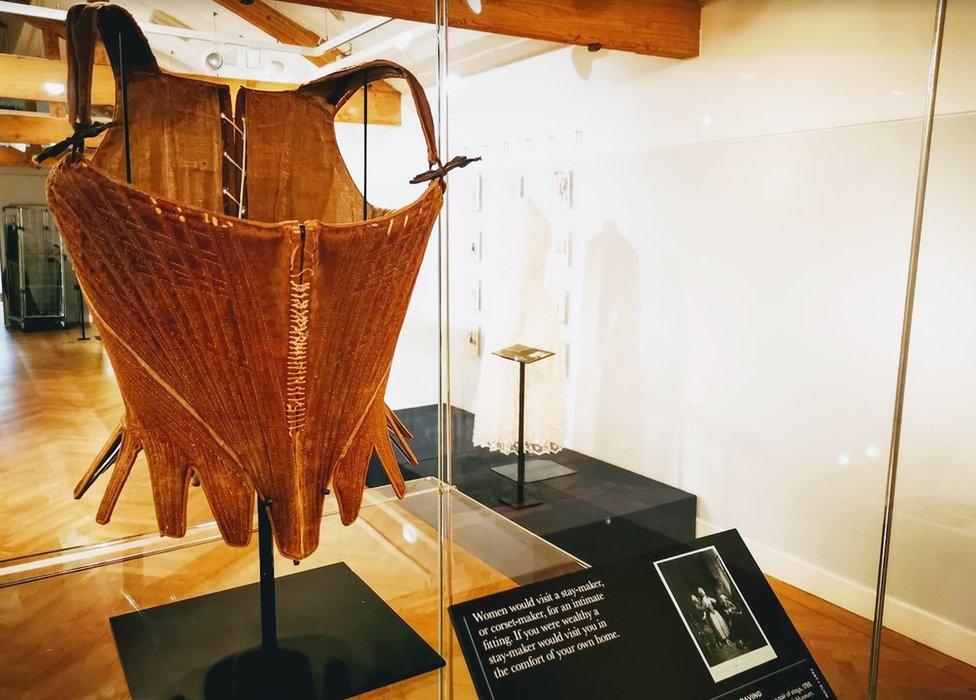
During the 18th Century this type of corset would have been worn to flatten the upper body
Taking people on a journey through Leeds from 1720 to 2020, the exhibition explores how the city came to be home to some of the top retailers, earning it a place as a key shopping destination.
It also looks at the changing ways people have bought their clothes - from the era of tailors and dressmakers to the rise of fast, mass-produced fashion.
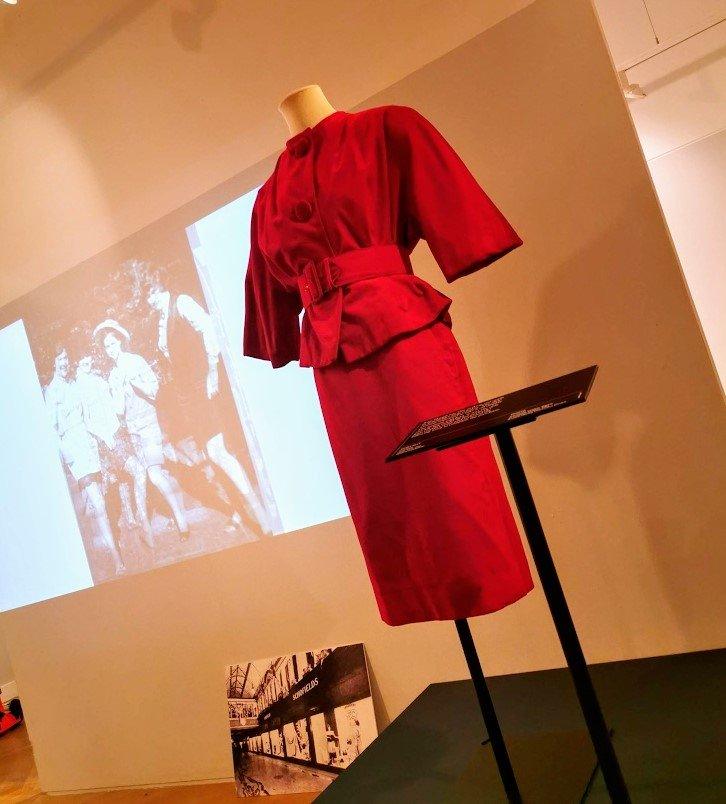
Jean Hough could not resist this outfit when she saw it in the window of department store Schofields, regarded as being the pinnacle of shopping in the city centre for much of the 20th Century

Vanessa Jones, Leeds Museums and Galleries' assistant curator of costume and textile, said: "Changing styles, trends and the clothes people have worn mirror the many different ways society and its attitudes towards everything from gender to diversity have developed through the ages."
Following Queen Victoria's example, it was customary for families to go through elaborate rituals to commemorate their dead and a collection of clothing from Frederick Forster's Mourning Warehouse illustrates how businesses profited from that.
The industrial revolution and the rise of technology enabled mourning wear to boom as people became less reliant on made-to-measure clothes and were able to go and buy garments in shops.
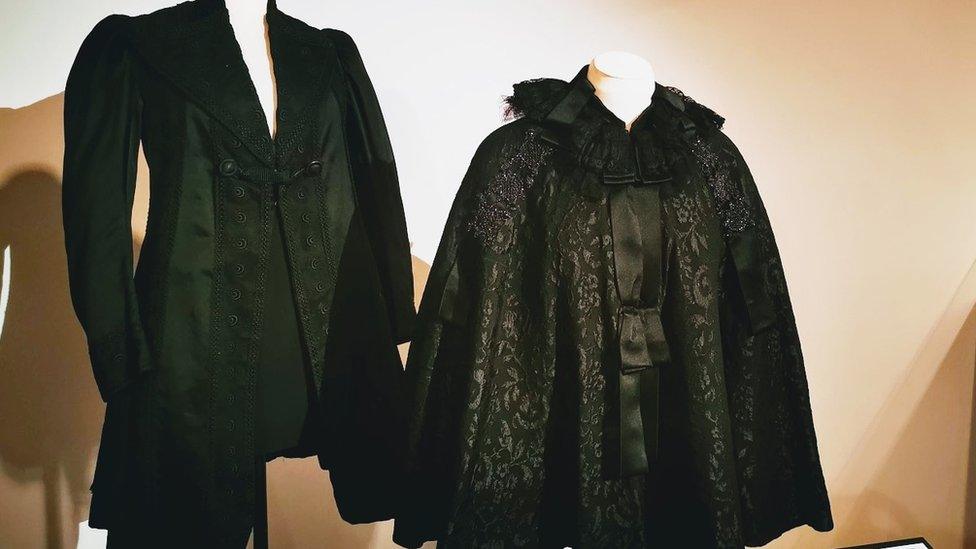
Mourning clothes were big business
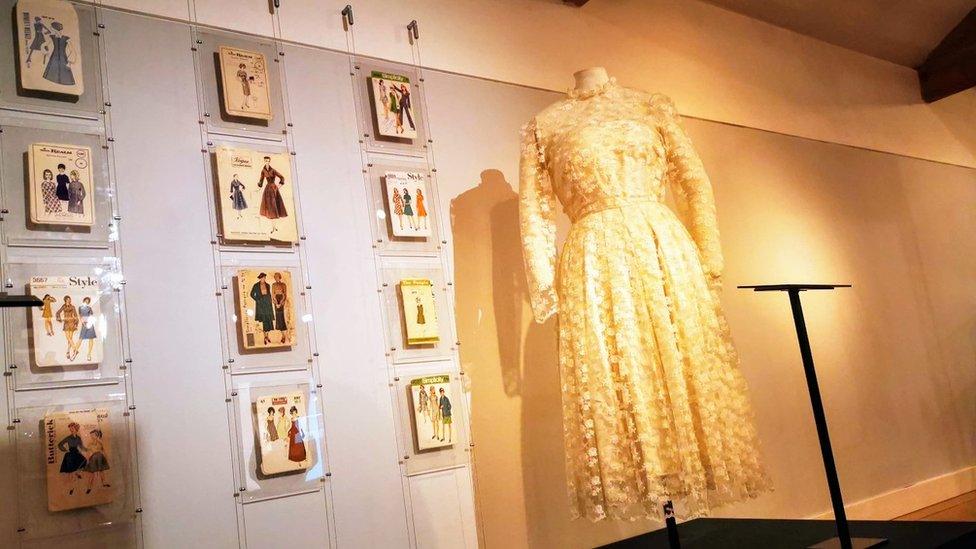
Materials for this wedding dress, made by seamstress Muriel Farrar for her daughter's wedding in 1986, were bought from Leeds-based haberdashers Samuel Taylor's, which is still open
The rise in haberdasheries through the centuries served the popularity of dress-making, which rather than a necessity, became a thing of luxury.
The collection goes on to reflect the modern day Leeds high street - one dominated by an explosion of mass-produced, fast fashion where many of the old streets and buildings have been lost to new shopping centres.
Fast x Slow Fashion: Shopping for clothes in Leeds, 1720-2020 will be at Leeds City Museum until 20 June.
- Published5 April 2019
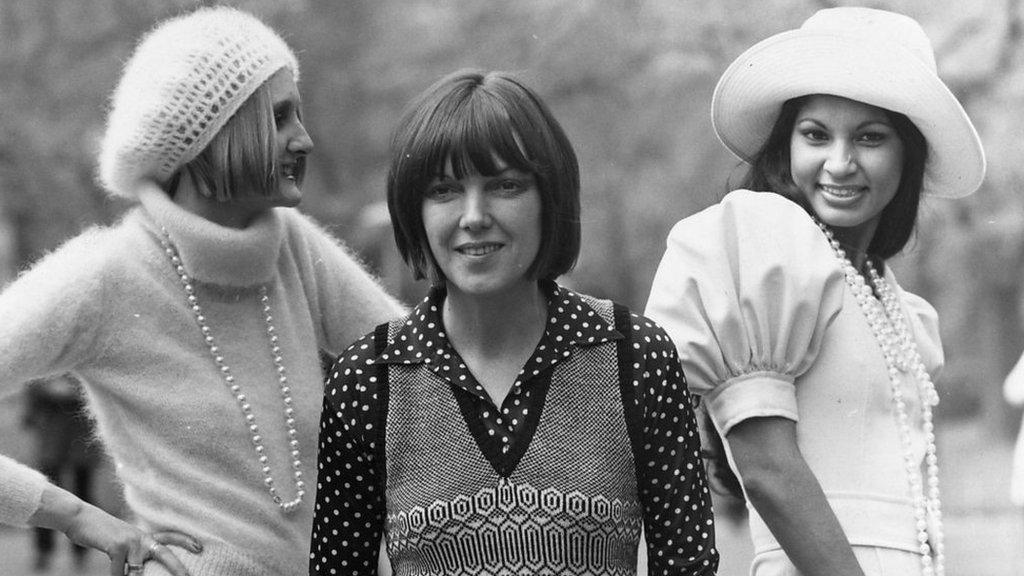
- Published24 February 2019

- Published19 March 2016
